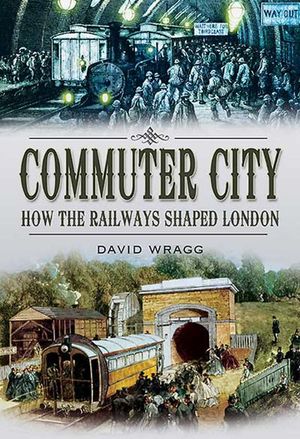Commuter City
Published by Pen & Sword Books
On the eve of the railway age, London was the worlds largest and most populous city and one of the most congested. Traffic-clogged roads and tightly packed buildings meant that travel across the city was tortuous, time-consuming and unpleasant. Then came the railways. They transformed the city and set it on a course of extraordinary development that created the metropolis of the present day. This is story that David Wragg explores in his fascinating new book. He considers the impact of the railways on London and the Home Counties and analyzes the decisions taken by the railway companies, Parliament and local government. He also describes the disruptive effect of the railways which could not be built without massive upheaval. His study of the railway phenomenon will be thought-provoking reading for anyone who is keen to understand the citys expansion and the layout of the capital today.
BUY NOW FROM
COMMUNITY REVIEWS

